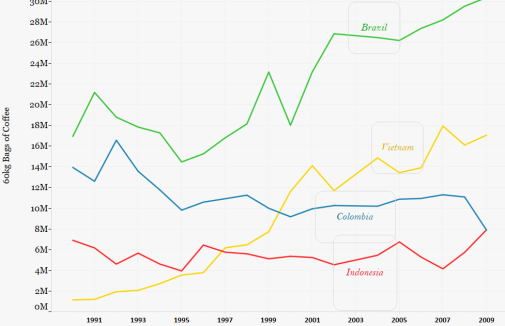The 4 coffee-exporting giants are Brazil, Colombia, Indonesia and only very recently Vietnam. We owe a lot to these countries whether we drink Starbucks, instant Nestle coffee, or connoisseur specialty coffees. Brazil has remained unbeaten as the top producer of all sorts of coffee since the late 19th century, when more than half of the world’s coffee was produced by Brazil in the coffee-producing states of São Paulo, Rio de Janerio, Minas Gerais and Espírito Santo. Today, Brazil produces about 30% of all coffees, exporting a 30 or so million 60 kg bags. Though coffee was grown by small producers in Vietnam since it was brought into the country by the French, the Đổi Mới policy in 1986 saw the rapid increase in agricultural industrialization. A considerable amount of capital and land was acquired and channeled into the production of coffee in particular.
The seemingly household and commonplace term coffee is deceiving and does not speak of the sheer variety of coffee products that exist. While it only refers to seeds or the cherries of the coffee plant, it covers a number of stages of processing: unhusked, unroasted (a.k.a green), or roasted. It may also refer to coffee in any form: instant, de-caffeinated, ground, or liquid coffee. Furthermore, it may refer to either arabica or robusta coffee, arabica being of higher-value than the harsher-tasting robusta. While Brazil is the largest producer of coffee in general, it specializes in arabica production and produces relatively smaller quantities of robusta. Vietnam on the other hand is the world’s largest producer of robusta.
This visual was created using Tableau and data from the International Coffee Organization.
